
Rabbinic literature, in its broadest sense, is the entire spectrum of rabbinic writings throughout Jewish history. However, the term often refers specifically to literature from the Talmudic era, as opposed to medieval and modern rabbinic writing, and thus corresponds with the Hebrew term Sifrut Chazal. This more specific sense of "Rabbinic literature"—referring to the Talmudim, Midrash, and related writings, but hardly ever to later texts—is how the term is generally intended when used in contemporary academic writing. The terms mefareshim and parshanim (commentaries/commentators) almost always refer to later, post-Talmudic writers of rabbinic glosses on Biblical and Talmudic texts.
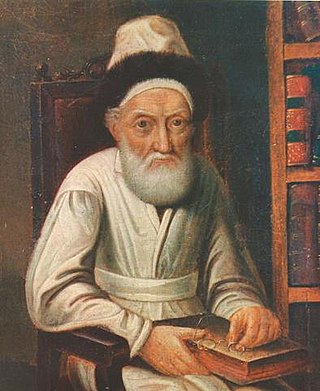
Menachem Mendel Schneersohn also known as the Tzemach Tzedek was an Orthodox rabbi, leading 19th-century posek, and the third rebbe of the Chabad Lubavitch Hasidic movement.

Kehillas Yaakov Pupa is a hasidic dynasty, named after the Yiddish name of the town of its origin.
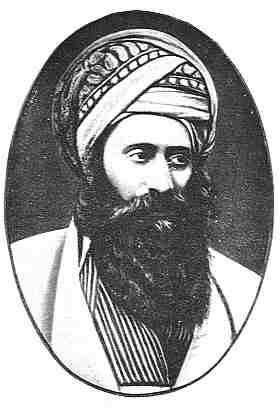
Yosef Hayim was a leading Baghdadi hakham, authority on halakha, and Master Kabbalist. He is best known as author of the work on halakhaBen Ish Ḥai, a collection of the laws of everyday life interspersed with mystical insights and customs, addressed to the masses and arranged by the weekly Torah portion.
In Jewish law and history, Acharonim are the leading rabbis and poskim living from roughly the 16th century to the present, and more specifically since the writing of the Shulchan Aruch in 1563 CE.
Abraham ben David, also known by the abbreviation RABaDRavad or RABaD III, was a Provençal rabbi, an important commentator on the Talmud, Sefer Halachot of Rabbi Yitzhak Alfasi and Mishne Torah of Maimonides, and is regarded as a father of Kabbalah and one of the key links in the chain of Jewish mystics.

Yaakov Yisrael Kanievsky, known as The Steipler or The Steipler Gaon, was a Haredi rabbi, Talmudic scholar, and posek ("decisor" of Jewish law), and the author of Kehilos Yaakov, "a multi-volume Talmudic commentary".
Joseph Saul Nathansohn (1808–1875) was a Polish rabbi and posek, and a leading rabbinical authority of his day.

Rabbi Yechiel Yaakov Weinberg (1884–1966) was an Ashkenazi Orthodox rabbi, posek and rosh yeshiva. He is best known as the author of the work of responsa Seridei Eish.
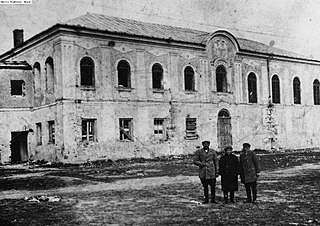
Izhbitza-Radzin is the name of a dynasty of Hasidic rebbes. The first rebbe of this dynasty was Rabbi Mordechai Yosef Leiner, author of Mei Hashiloach, in the city of Izhbitza. Mordechai Yosef founded his own Hasidic movement in the year 5600 (1839), leaving the court of Rabbi Menachem Mendel of Kotzk.

Yaakov Ben Zion Mendelsohn was a renowned Russian-born Orthodox Jewish scholar, communal rabbi, Talmudist, Halachist, and rabbinical author.
In Jewish law, a posek is a legal scholar who determines the application of halakha, the Jewish religious laws derived from the written and Oral Torah in cases of Jewish law where previous authorities are inconclusive, or in those situations where no clear halakhic precedent exists.
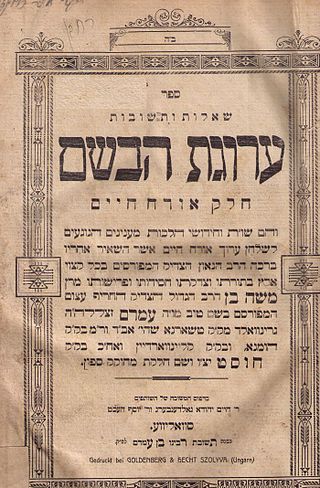
Moshe Greenwald (1853–1910), also spelled Grunwald, a rabbi in Hungary at the end of the 19th century. He was the rabbi of Chust, Hungary and progenitor of the Pupa Hasidic dynasty through his son Yaakov Yechezkiya. He was also the author of Arugas Habosem, a book of responsa covering halakhic issues.

Rabbi Gavriel Zinner is an Orthodox Rabbi in Boro Park, New York City known for his series of books on Jewish law, Nitei Gavriel.
Moshe Sofer (II) (1885–1944) (German; Moses Schreiber) was a prominent Orthodox Jewish (Charedi) Rabbi in the early 20th century. He was Dayan of Erlau, Hungary and author of a halachic responsa sefer named Yad Sofer.

Shlomo Sztencl was a Polish Orthodox Jewish rabbi. He served as Chief Rabbi of Czeladź, Poland and Rav, dayan, and rosh yeshiva of Sosnowiec, Poland. He is the author of Koheles Shlomo and Beis Shlomo, the former published posthumously.
RabbiYosef Haim HaCohen was the President of the Ma’araviim Community in Jerusalem, as well as the rabbi, dayan, shadar and rabad of the congregation.
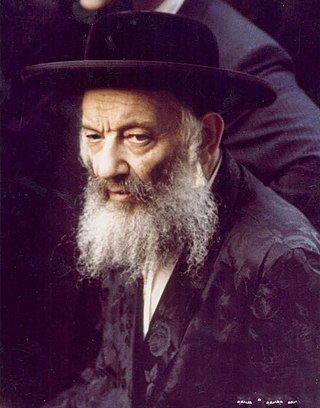
Yosef Greenwald was the second Rebbe of the Pupa Hasidic dynasty. Before World War II he was a rabbi and rosh yeshiva in Pápa, Hungary.

Rabbi Yitzchak Isaac Sher was the rosh yeshiva of the Slabodka Yeshiva in Lithuania and Bnei Brak. He was the son-in-law of Rabbi Nosson Tzvi Finkel, the Alter of Slabodka.














